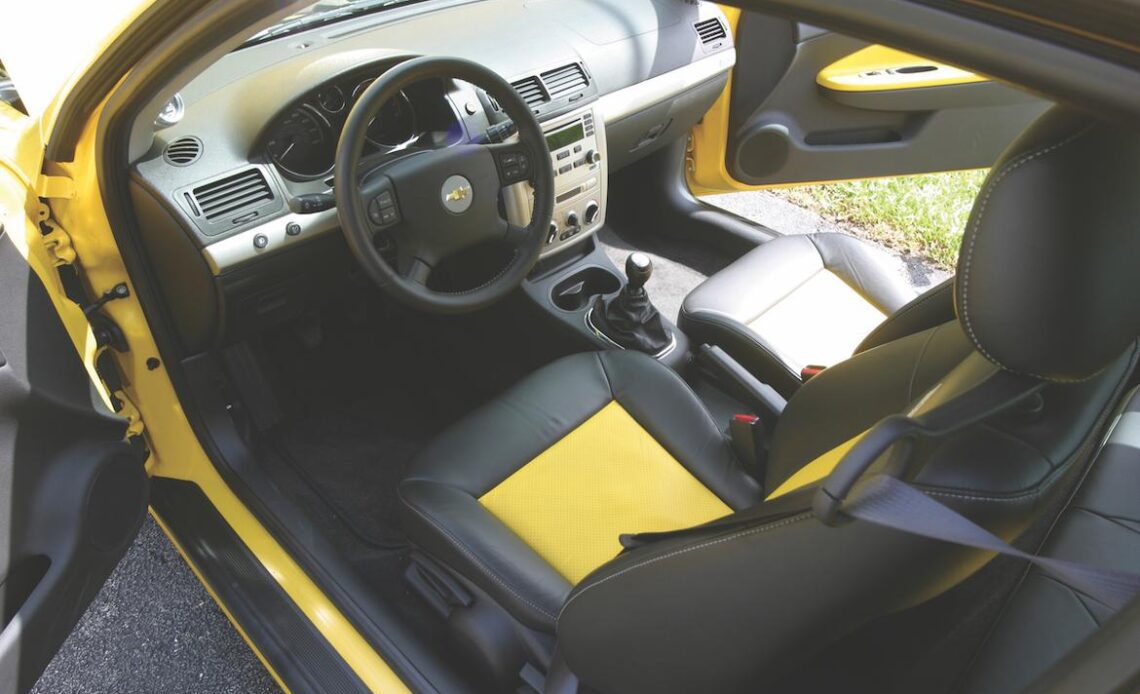For most consumers, Chevy’s Cavalier was a totally forgettable denizen of rental car fleets and subprime borrowers. For more than 20 years, the nameplate graced ever more downmarket cars as its technology and styling failed to keep up. Sure, there were a few half-hearted attempts at making a Cavalier that was also fun to drive, but there were a lot …
Two Esses, Three Versions
Photography Credit: Scott R. Lear
Other manufacturers were already offering sporty variants of their compacts–cars like the Sentra SE-R, Civic Si, Neon SRT-4, SVT Focus, and even the Evo and WRX. Chevy entered that ring by giving the Cobalt a youthful kick, creating a series of enthusiast-targeted models under the Cobalt SS nameplate. Even if few Cobalt buyers understood its history, the Super Sport name carried some historical weight.
The Cobalt SS badge actually graced three very different cars. The first out of the gate was the 205-horsepower Supercharged Coupe. Under the hood was a sweet 2.0-liter Ecotec engine. It was similar to the one used in the Saab 9-3 since 2002, but with supercharging instead of a turbo. For packaging reasons, a liquid-to-air intercooler with a separate coolant reservoir handled charge cooling. Behind the Euro-sourced engine was a five-speed transmission, which was also cribbed from various European GM cars–including the Saab 9-5.
How did the SS’s equipment differ from a regular Cobalt’s? It sported unique, stiffer suspension tuning, larger anti-roll bars, and 18-inch forged alloy wheels. Available options included a Quaife mechanical limited-slip differential and Recaro seats in the available Performance Package. A gigantic spoiler was standard equipment, as on many sport compacts at the time.
The little coupe was quite a dynamic improvement over the ordinary Cobalt. It easily clicked off sub-6-second zero-to-60 times in contemporary reviews, and was roundly praised for its taut handling and stout engine. Wheelspin and torque steer were present, but thanks to a price of less than $22,000, most everyone seemed to agree that the good outweighed the bad in this new GM pocket rocket.
Nearly from the beginning, GM Performance Parts offered dealer-installed Stage kits to boost the power of the supercharged engine without voiding the factory warranty. The Stage 1 package reflashed the factory ECU and increased the injector size for a…
Click Here to Read the Full Original Article at Grassroots Motorsports Online Articles…

